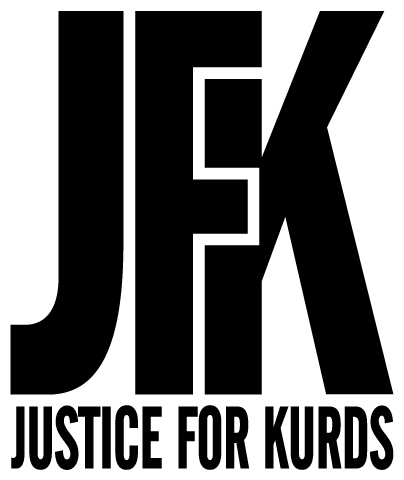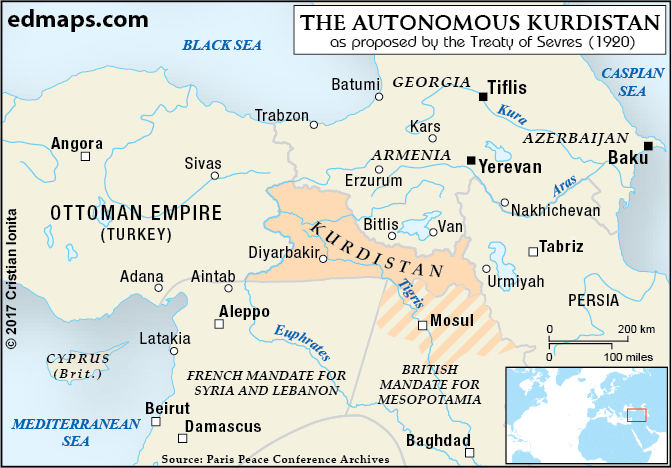The Turkish War of Independence, which lasted from 1919 to 1922, left the new generation an inheritance like Tartarus, the mythical land of torment for the dead. Every street, neighborhood and green field is dedicated to “testimony”. The Turkish national movement is an ignis fatuus, a will-o’-the-wisp, a false and misleading fire that may initially be perceived as good but leaves a leaden ash, its promised hope a deception.
The rhetoric of the “war against imperialism”, masterfully used by the Turkish bourgeoisie and feudal class, was substantially built on the extortion of the rights of self-determination of other ethnic identities such as Greeks, Armenians, Kurds, and Laz people. In this context, “the Independence War” let by Mustafa Kemal Ataturk led, was a coup. It was a liberation war of sorts, aimed at getting rid of other ethnicities within the Ottoman Empire, which had entered into a period of disintegrated administration (Ottoman Turkish: “teşettüt-i idare”) Yes, it is true that the Treaty of Sèvres was a sharing project of occupying powers, but the Mustafa Kemal and his allies did not offer a specific solution either. Their vision was a Turkish nation-state project, cutting off other local elements of Asia Minor like a guillotine. There was no state project based on asabiyyah, İbn Khaldun’s concept of social solidarity and community.
The autocratic Turkish nation-state is a sorrowful monument of darkness, particularly for the Kurdish people. As the famous Ottoman poet Tevfik Fikret said, “Nights are the shelter of bandits.” The equality of Kurdish citizenship and freedoms were seized by bandits in the pitch darkness, and Kurdistan was transformed into the land of atrocities. In a sense, the Kurdish question, similar to the Irish question of United Kingdom, was instrumentalized for the perpetuation of a new state, and Kurdistan itself was converted by propertied classes into a colony. Mustafa Kemal and his partners “subtly” tried to sculpt the colony with a hammer and a chisel.
In the last years of the Ottoman Empire, the Ottoman Parliament agreed to the “National Oath” (Turkish: “Misak-ı Milli”), which was the first step toward the enactment of the colonial, apartheid policy of the Turkish nation-state. The National Oath was a set of six decisions – according to its fifth article, the administration undertook to protect minority rights, but this was never done. During the fall of the Ottoman Empire, the Kurdish people, who had held the national aims of autonomy and independence, chose resistance when their peaceful demands for their rights were not accepted. In 1921, the Kurdish Koçgiri tribe rose up against the Turkish authorities with the aim of securing Kurdish national rights – the right to autonomy accepted by the Ankara administration and approved by the Istanbul Sultanate Government. However, the Turkish authorites sent the Central Army, commanded by Nurettin Pasha, after the insurgents, murdering thousands of people. When the Grand National Assembly of Turkey considered removing Nurettin Pasha from his post on the grounds of using “disproportionate force”, Mustafa Kemal protected him from all investigations and later rewarded Nurettin Pasha, making him a commander of the First Army – and he was soon thereafter promoted to the rank of Lieutenant General. The story of Nurettin Pasha demonstrated the priorities and values of the soon to be born Turkish republic that was to succeed the Ottoman Empire, making it plane that questions of minority rights will be dealt with using violent and indiscriminate brutality.
Undoubtedly, the Treaty of Lausanne, signed on July 24, 1923, was, at its foundations, a document of denial pursued by the Turkish institutional order against Kurds. In this sense, we should not forget that it is necessary to examine the policies of apartheid and genocide against Kurds, Armenians and Greeks, not within the context of lawlessness, but rather within the context of the law. According to the Treaty of Lausanne, the solutions to the minority issue addressed only included non-Muslim minorities (e.g., Greeks, Armenians and Jews). Thus, the architects of modern Turkey legally paralyzed the Kurdish reality.
The Reform Plan for the East of 1925 (Turkish: Şark Islahat Plânı) was set forth – a comprehensive and systematic projects of destruction designed by the Turkish state. In the 17th article of the plan, the phrase “Speaking Kurdish should be definitely forbidden”, laid bare the aims of the new sovereign power.
The Turkish administration created conflict between different groups within the country’s society and exploited this antagonism, and killed many innocent Kurds, notably in Zilan (1930) and Dersim (1938). As Henry II of England introduced “the uncivilized Irish people to civilization” with the occupation of 1167, the newly established Turkish nation-state did the same to the region’s indigenous Kurdish people, granting the Kurds a “cadaver civilization” by instituting a policy of massacres.
After that, the Kemalist regime’s anti-Kurdish policy continued beyond the period of one party rule and up to the present day after the rise of Islamist parties in the country. The Islamist politicians, who positioned themselves as believers who would end tribalism and racism, did not hesitate to continue the tradition of the Kemalists – subjugating the Kurdish people and making this uncompromisingly anti-Kurdish approach a central tenet of both domestic and foreign policy. In the Turkish context, the very use of the word “Kurdish” elicits hatred, which strengthens dictatorial rule In this respect, from Ataturk to current Turkish President Recep Tayyip Erdogan, a project remains in place against Kurds. As Karl Marx said, the first time is a tragedy, the second time is a comedy. Both Ataturk and Erdogan sang the same melody concerning the Kurdish issue. At present, the Kurdish people suffer at the hands of Erdogan, a man who “shines on the sea of darkness”.
Erdogan has become an absolute ruler, and dispensed with pretenses of fairness and democratic character. He ordered the construction of 1,000-room palace for himself, rules by decree, and intermingles family with government and commerce – it is no wonder that he is often referred to as an aspiring sultan. Using religious and populist rhetoric, and embracing the role of victim while attacking all real and perceived enemies and promoting regional chaos, Erdogan continuously tightens his grip on power and broadens his own kleptocratic network. Erdogan has targeted the Kurdish population both inside and outside of Turkey’s borders, indiscriminately using air power against densely populated urban areas and using the judiciary against those who dare to speak out against his policies of aggression.
Now, the kleptocracy of Erdogan’s political party, the Justice and Development Party (AKP), portrays itself as a champion for the rights of persecuted Muslim peoples usch as the Rohingya Muslims of Myanmar. However, at the same time, the AKP brutally suppresses the Muslim Kurds of Turkey and silences their voices – deposing and imprisoning Kurdish elected officials and shutting down Kurdish media outlets. While Erdogan’s religious bent is somewhat novel compared to the ideology of past Turkish leaders, his obsession with the Turkish ethnic nation-state structure and embrace of Turkish-style (Turkish: alaturka) fascism is no innovation. With respect to the Kurds, Erdogan is no different from previous Turkish rulers, except in that he fashions himself as a Muslim leader and proclaims his opponents to be infidels. Today’s Turkish nation-state now carries a decidedly Islamist character, along with the same chauvinism that has been characteristic of the republic since its foundation.
Dr. Konak Ismet was born in Dersim (re-named Tunceli by the Turkish authorities) in the Kurdish region of Turkey. He obtained his Bachelor’s Degree in Journalism at Istanbul University, and later finished his Master’s degree in department of Russian history at Moscow State University. In 2017, he earned his Ph.D. from the department of Turkish history at Istanbul University, submitting a Ph.D. thesis entitled “Turkish Foreign Policy During the Russian Civil War (1918-1922).” His focus is on Russo-Turkish history, Soviet ideology, Kurdology and the Armenian genocide.

